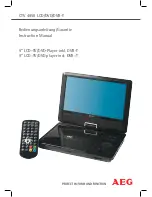
aXis CONTROLLER HOME STANDBY GENERATOR
INSTALLATION
23
CAUTION
Check for leaks by spraying all connection points with a soap
solution made of dishwashing liquid and water. If you see
bubbles, this indicates a leak and the connection should be
corrected. Check each connection point, there should not be
a visible bubbling when soap solution applied. Installed piping
must be properly purged and leak tested, in accordance with
applicable codes and standards. A sediment trap should be
placed in the fuel supply pipe line to drain any condensation.
Refer to the “Fuel Pipe Sizing Chart” contained in this manual or
the Installation manual for your specific HSB model. Champion
HSB units have been run and tested at the factory prior to
shipment. They do not require any type of break-in period.
4. LPG VAPOR PIPE SIZING
The HSB leaves the factory set up for NG. If you are going to fuel
the HSB with LPG you MUST change the Master Mixer Assembly
(carburetor system) for LPG usage. The HSB will not perform on
LPG if the carburetor system is not changed from NG to LPG. Refer
to “Converting to LPG” in this manual or the Installation Manual
of your specific HSB model. If your installation requires the engine
to run on LPG, a set of orifices in the Master Mixer Assembly
(carburetor system) MUST be changed. The LPG set of orifices are
enclosed (shipped) with the HSB.
The following LPG information is provided to assist the fuel
installer. This information should not be deemed to be all inclusive
or to conflict with local dry fuel codes. Consult your local fuel
supplier or Fire Marshall for final answers on proper local codes
and installation. All piping must comply with NFPA 54 and related
codes. Gas line connections should be made by a certified
plumber familiar with local codes.
DANGER
LPG is highly explosive. Even the slightest spark can ignite and
cause an explosion, which could cause burns or fire resulting
in serious injury, property damage or even death. No leakage
is permitted. Safety is important.
Gas pipe sizing is critical to the proper operation of the HSB. The
HSB fuel inlet size has no bearing on the proper gas pipe size
running to the HSB. Gas supply and pipe MUST be sized at 100%
load Btu rating.
Pipe sizes are measured by inside diameter (ID) to include any
fittings, valves, elbows, tees or angles. Add 2.5 feet (.76 m) per
any bend, tee or angle in the pipe to the overall distance. For each
90 degree elbow, add 8 ft. (2.4m) to the measurement. Use a pipe
sealant or joint compound for use with LPG/NG on all threaded
fitting to assure zero leakage.
The LPG must be a vapor withdrawal system. The HSB will not
work on a liquid withdrawal system. Gas line connections should
be made by a certified plumber familiar with local codes.
New LPG tanks and existing LPG tanks already located at the
installation site, have a primary fuel regulator set and intended for
home heating and cooking. This regulator might not be properly
sized to accommodate the addition of the HSB. Contact the local
LPG supplier to properly size the fuel regulator.
Make sure the tank is sized large enough to provide the required
Btu’s for the HSB and all connected appliances.
The LPG fuel tank must have a dedicated primary fuel regulator
mounted at the tank fuel outlet point and set for 6 ounce pressure,
10 -12 inch water column. A direct, dedicated fuel line connected
directly to the HSB mounted secondary regulator, also set at
6 ounce pressure, 10 -12 inch water column. When sizing the
secondary regulator for LP applications be sure to note the
maximum individual load capabilities. This could impact HSB
starting performance if sized to small. It is not recommended to
reduce the fuel supply line pipe exiting the secondary regulator
unless to accommodate the flexible fuel line required to install and
shipped with the unit. The may result in starting or performance
issues with the HSB.
Make sure fuel supply line pipe includes an on/off external manual
full flow shut off gas valve at both the LPG tank and at the point of
connection to the HSB.
A sediment trap should be installed into the fuel supply pipe line to
drain any condensation.















































